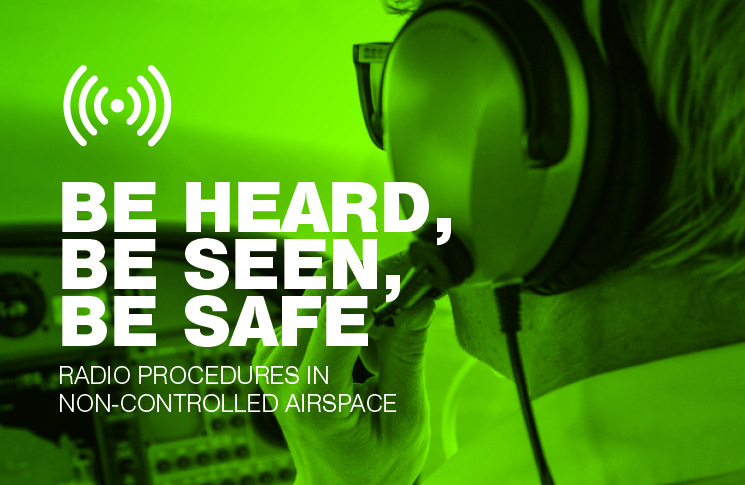Non-controlled aerodromes in non-controlled airspace, known as ‘Class G airspace’, can experience a high volume of traffic with a wide variety of aircraft operating in and around them, and this can present challenges for pilots.
A new resource booklet, Be heard, be seen, be safe – radio procedures in non-controlled airspace has been produced by CASA on radio procedures in non-controlled airspace.
When flying in non-controlled airspace, radios must be used along with ‘see-and-avoid’ procedures. This means scanning with your eyes, including above you and below you, to look out for aircraft. You must also understand how to operate safely around other aircraft types through safe separation distances and collision avoidance techniques. Good pilot-to-pilot communications, or ‘alerted’ see-and-avoid’, then completes the picture of what is happening around you.
There’s plenty of information now available for pilots on radio procedures in non-controlled airspace. This is important following CASA’s recommendation of the appropriate VHF frequencies to use in the vicinity of aerodromes in Class G airspace. In many situations in non-controlled airspace, CASA recommends using the area frequency. However, in the vicinity of uncharted aerodromes, pilots have discretion to use the most appropriate frequency that ensures safe operation. This can be MULTICOM 126.7MHz.
The latest procedures are set out in CASA materials, which can be found online:
- Civil Aviation Advisory Publication – CAAP 166-01 v4.2 Operations in the vicinity of con-controlled aerodromes
- Civil Aviation Regulations 1988, CAR 166 – Radio broadcasting by pilots overflying non-designated, non-controlled aerodromes
- Civil Aviation Advisory Publication – CAAP 166-2(1) Pilots’ responsibility for collision avoidance in the vicinity of non-towered (non-controlled) aerodromes
- Aeronautical Information Publication – available on the Airservices Australia website.
All pilots operating in non-controlled airspace should refer to these resources to ensure they operate safely. In the booklet there is information on radio carriage, frequencies, when broadcasts must and should be made and how to make effective broadcasts.

Order a copy of Be heard, be seen, be safe, and watch the CASA safety video Out-n-Back 2 Episode 3 to remind yourself of the need for accurate and effective radio calls in, and around, non-controlled aerodromes.


Nothing beats a Mark 1 eyeball and situational awareness..